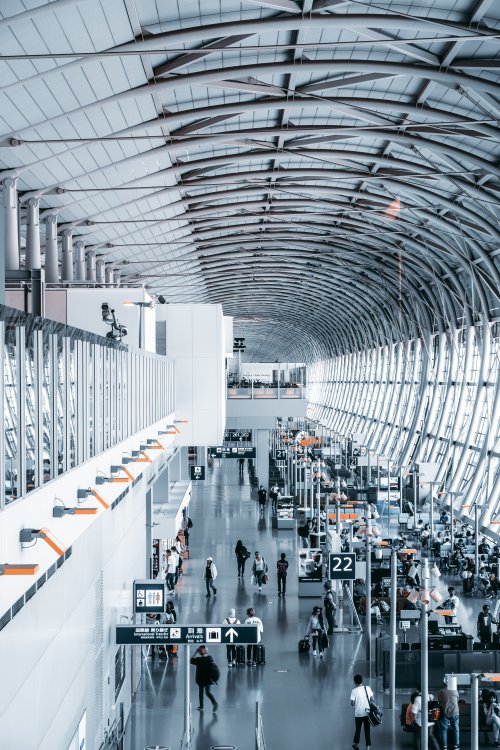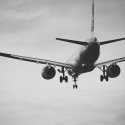First Time Flyers: What You Need to Know
By Evan ZavitzTop 5 Tips to approach your first flight with confidence
For those looking to spread their proverbial wings and take flight for the first time, here is what you need to know when it comes to air travel.
Before You Fly
The landscape of air travel in America is saturated with choice. As of 2020, the online data platform Statista reports that there are over 50 airline companies within the US — 18 of those being major carriers including Delta, Southwest, and American Airlines. Before you embark on your travel journey, be aware of the different choices available to you when it comes to air transportation. Tickets can vary widely in price depending on factors such as the airline, airport, demand, add-ons like carry on and checked baggage, and stops in between your final destination. Justin Franco, former spokesperson for American Airlines comments:
“It’s no secret that, in general, the cheaper fare usually wins over consumers. But this could mean a stopover in another city (connection) or traveling the whole day — literally the first flight from your home city to arriving at your final destination near airport closing time to save some money,” said Franco.
Use flight comparison tools to help research and identify the appropriate flight for your travel needs and consider your budget. Travelers flying solo vs. with a family or compatriots may have vastly different expectations for their flight itinerary. Janelle Axton of makethetripmatter.com notes that buying plane tickets in advance is essential.
“There is nothing worse than scrambling to buy your tickets last minute and facing surges in pricing and lack of availability,” said Axton. “Always book directly with the company,” as this adds an additional level of certainty and security to your purchase.
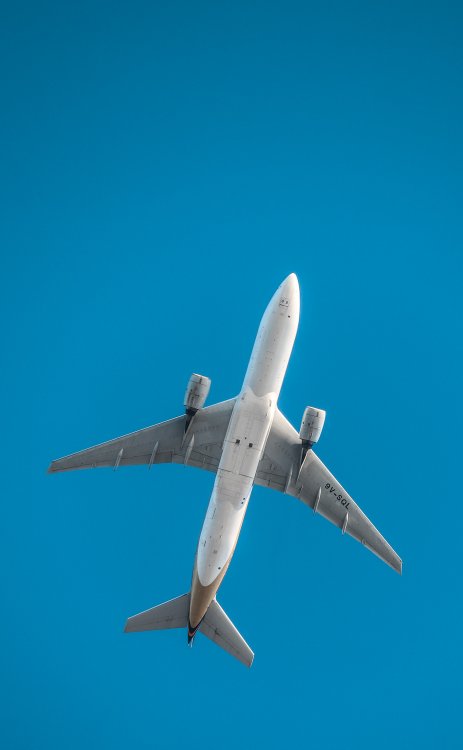
Check In & Baggage
If you are a first-time flyer, this next line item might be a little peculiar. Purchasing your ticket is only the beginning of your air travel experience. Before you fly, you will be required to check in to your flight, verifying that you will be present on the aircraft. This can be done in several ways. Most airlines will have online check-in portals that allow you to confirm your intent to fly from your smartphone or laptop. This route allows you to print your boarding pass ahead of time or save it directly to your smartphone. Additionally, there is always the option to check in at one of the many kiosks in the airport terminal.
“First-time flyers should be wary of the immense amount of urgency,” said Doug Liantonio, a frequent business traveler who works for Gravy Solutions. Because hiccups can occur and long lines can sometimes be unavoidable, Doug recommends travelers “…get to the airport two hours before departure.”
When it comes to baggage, having a little bit of a time cushion before departure can likewise result in fewer hairs pulled. Before you fly, research your airline’s baggage policy. Pack accordingly and do not let your luggage exceed the parameters of weight and size, as this is sure to throw a wrench in your otherwise fluid check in process — additionally, confusion surrounding acceptable baggage can also contribute to additional fees.
Once at the airport terminal, look for the check-in counter of your chosen airline and speak with the representative or use the provided kiosks to print a baggage claim ticket for any items you wish to meet you on arrival at your destination. Remember, depending on your chosen airline and if you pack light, you can carry your luggage with you throughout the entire journey — avoiding having to check baggage altogether.

Security
For first-time flyers, the snaking lines of airport security on a busy travel day can be quite daunting.
“When you get to security, you can expect to have your ID checked, be asked to remove your shoes and coat, and put all of it and any metal in your pockets through the scanner,” said Keri Baugh of Bon Voyage With Kids.
Do your best to be prepared by packing items effectively for easy removal during the screening process. For example, some airports will ask you to remove your laptop and shoes. Plan ahead by wearing shoes that easily slip on and off and keep your technology in an easy-to-reach bag so that removing it doesn’t slow you, or the line, down. Screening procedures and technology are constantly changing as TSA continues to adapt security processes to maintain the highest standards of safety. For more information and specific details refer to the TSA.gov website.
Boarding & Take-off
Once you make your way through security you’ll need to find the gate from which your plane departs. Consult your ticket or one of the electronic departure boards that should be stationed nearby for updated flight information. Once you have successfully located your gate, take time to collect any last-minute essentials from nearby airport convenience stores and secure all items in your baggage. Roughly 30 minutes prior to takeoff, an airport representative will begin the boarding process.
“Since the pandemic, some airlines have started seating passengers from the back of the plane forward,” said Melanie Musson of usinsuranceagents.com. “Be patient with yourself and others as the density of people and baggage may lead to some frustrations and logistical hurdles from time to time.”
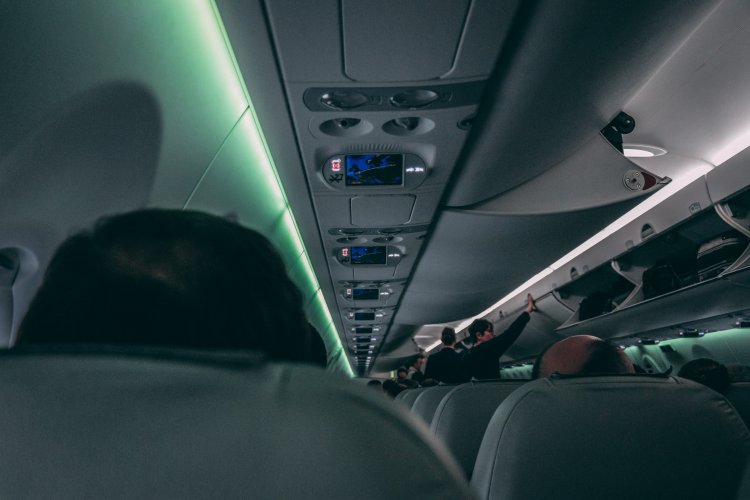
Once on the plane, locate your designated seat or find an open one — this depends on your chosen airline’s policies and procedures. At this point, listen carefully to flight attendants for any special instructions. Once you have found your seat, store your carry on luggage, if any, in the compartment above your head. Smaller personal effects can be stored in the space near your feet.
What follows are a series of safety checks including flight attendants ensuring that you are correctly buckled in and that your seat and tray table are in the correct position for take-off. Further safety information will be provided, such as the locations of emergency exits and familiarization with the climate control system and lighting indicators above your head.
Once the cabin door is sealed and all safety information has been shared, the plane will begin to taxi to the runway. At this point, only blue skies and the promise of your destination await!
In-Flight & Landing
At this point, you should be comfortably situated and en route to your travel destination. On the in-flight portion of your air travel experience Eric Angerer of ezmoments.com says, “These guys are professionals. Let them do their job and relax. Look out the window and see the amazing views or take a nap until you arrive at your destination.”
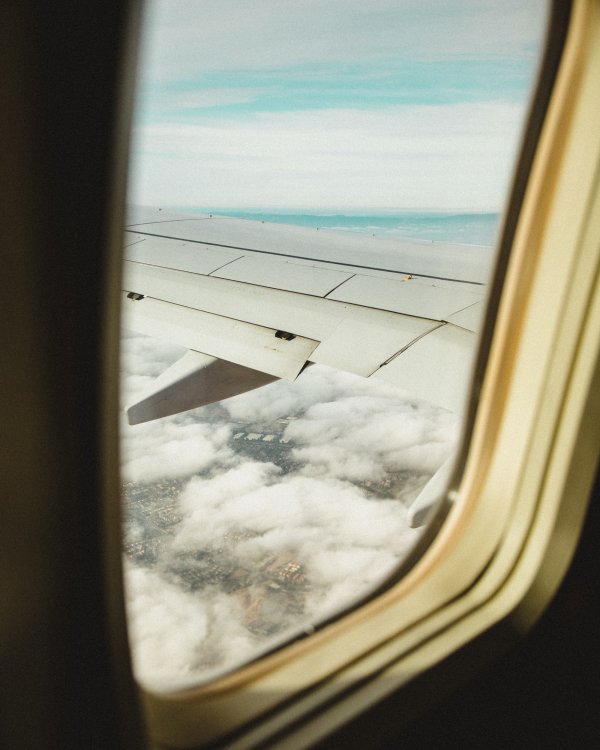
Eventually, you will hear the captain’s voice coming over the plane’s intercom giving you an update on the flight and expected time of arrival. When you’re nearing your destination, you will be instructed to tidy up your seat space and prepare for landing.
As the plane comes increasingly nearer the ground, you will begin to make out the sprawl of your destination. This portion of the flight sees the most direct interaction from the pilot with the airplane. Don’t be alarmed if there are more dramatic maneuvers and corrections at this stage of the flight. As you near the ground, you may hear the mechanical actuation of the landing gear being lowered as well as notice the wing flaps extending. The craft will increasingly reach closer and closer to the ground until finally, the wheels touch tarmac. At this stage of the flight, you will feel immediate deceleration — coupled with increased sound and vibration. Hold on to any loose items until your plane decelerates to a speed adequate for the taxi to the airport gate.
Once your plane comes to a complete stop and you are instructed to do so, you can remove your safety belt and begin to collect your personal items. Travelers will disembark from the front of the plane first. Even though you may be eager to make your way to the exit, air travel courtesy bids you wait for those ahead of you. Once the row in front of you begins to make their way, collect any overhead baggage — as quickly as you can — and make your way to the front cabin door. Once in the airport terminal, take time to situate yourself and identify the next steps. Look for signage that directs you to the baggage carousel, if necessary, or towards a taxi or rideshare stand or passenger pick-up areas.
If you have successfully collected all of your baggage and found transportation from the terminal, congratulate yourself; you have officially completed your first flight! Rest in the assurance that you can do it again and enjoy your travel destination to the fullest.
For more information and resources on travel, visit VacationistUSA!

